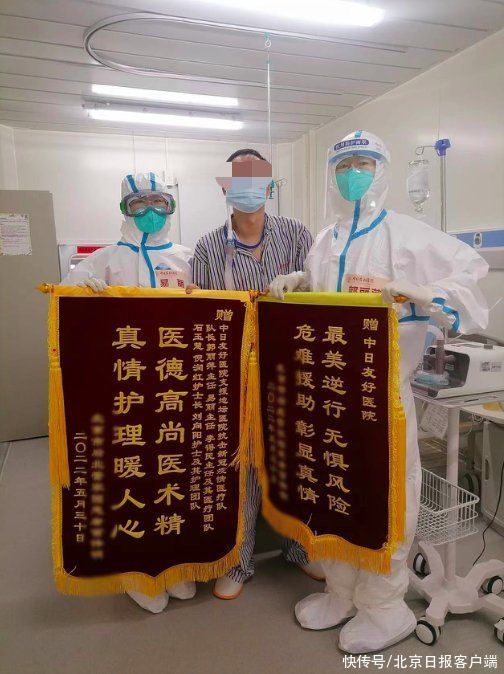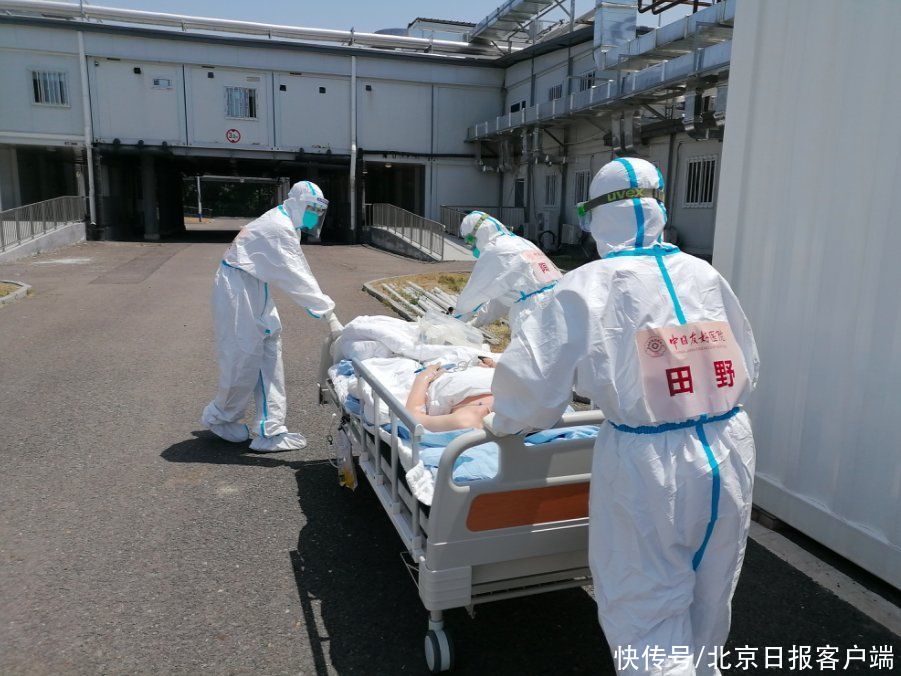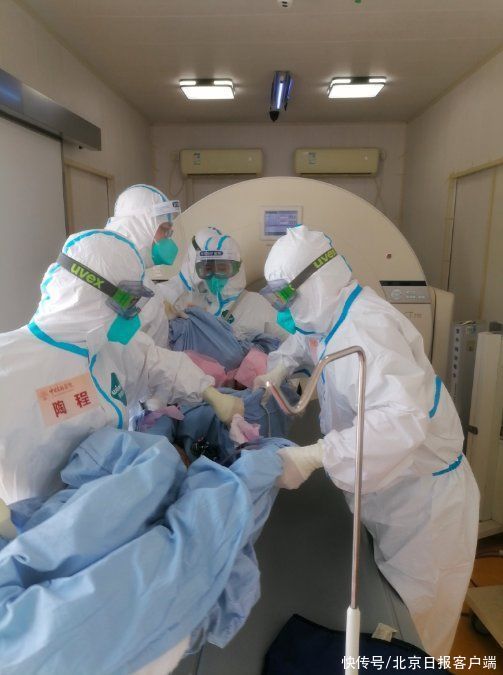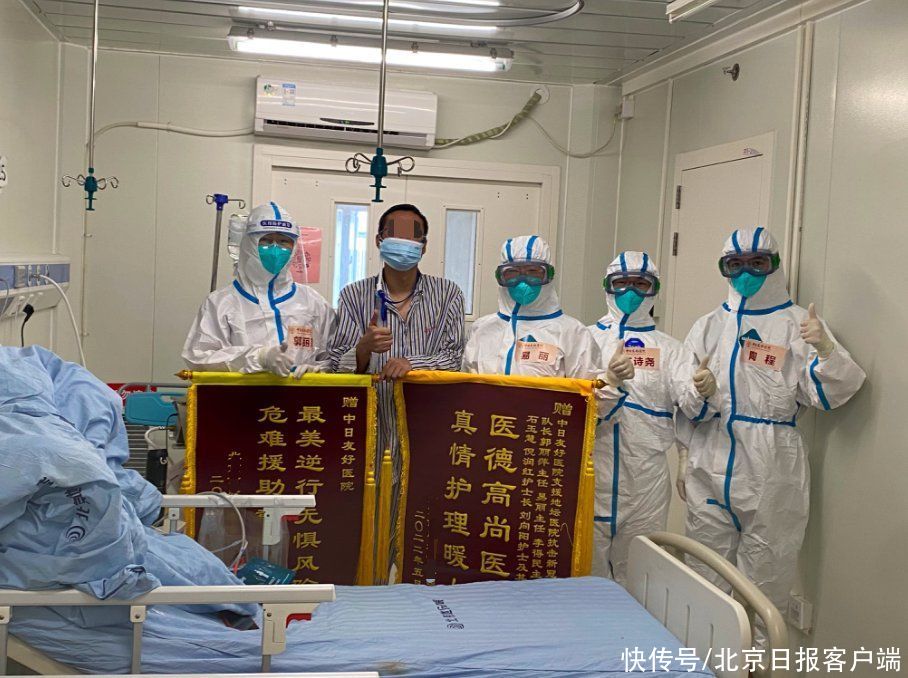On June 5, the medical team of the China-Japan Friendship Hospital will come to an end to support Beijing Ditan Hospital. On the 4th, the team members breathed a sigh of relief when they learned that on the 4th day after being transferred from the isolation ward, Mr. Gong, who had received the second chemotherapy, was in stable condition. Mr. Gong is the only patient in this round of the epidemic who is in critical condition due to comorbidities. A lot of effort has been devoted to his treatment by the medical team.

“The case of critically ill primary disease is a male patient. Three years after the operation of lung cancer, he currently has pericardial effusion and pleural effusion and is in critical condition. On May 12, at a press conference on the prevention and control of the new coronavirus pneumonia in Beijing, Li Ang, deputy director of the Municipal Health and Health Commission and spokesman, revealed in the briefing that a patient who was treated in Ditan Hospital due to comorbidities was ill. The situation of critical cases has affected the hearts of countless people.
This patient, who is concerned, is Mr. Gong who is suffering from advanced lung cancer. On May 7, Mr. Gong tested positive for nucleic acid and was admitted to Ditan Hospital. That night, he was transferred to the ICU team in West Sixth District due to aggravation of asthma, chest tightness and palpitations. An emergency chest CT examination on admission showed a large amount of pericardial effusion and pleural effusion, which seriously threatened the patient’s breathing and circulatory function. The medical team of Ditan Hospital performed pericardiocentesis and left pleural puncture on him in the early morning of the 8th. Wait for emergency treatment.

On May 12, when the medical team of China-Japan Friendship Hospital took over the sixth ward, Mr. Gong’s condition had gradually stabilized. However, the complicated condition has added a few twists and turns to his treatment road. In order to avoid the impact of the interaction of therapeutic drugs on the effect of antiviral treatment, at first, the Beijing New Coronary Pneumonia Expert Group decided to “treat the new crown first, and then treat the primary disease” for Mr. Gong. However, the treatment process was not smooth. After two rounds of antiviral small molecule drug treatment and neutralizing antibody treatment, the patient’s nucleic acid still failed to turn negative as scheduled.
At this time, Mr. Gong was a little anxious, and the symptoms of shortness of breath were also aggravated. “Don’t worry, this situation is not an exception. As long as you actively cooperate with the treatment, the situation will get better soon.” Guo Liping, the leader of the medical team, said that every time they go to the ward, the medical staff will actively encourage Mr. Gong. “You can overcome the desire to drink a lot of water. You just think, I am fighting a physical ‘defense battle’ to contribute to myself.” Since Mr. Gong is weak and has the habit of drinking a lot of water, it will aggravate In the case of effusion and edema, the medical staff often patiently persuaded him to actively cooperate with the treatment physiologically.

The nucleic acid has not turned negative for a long time, but the urgent need for anti-tumor treatment cannot be delayed. How can we better balance the contradiction between the treatment of patients’ new crown disease and the treatment cycle of anti-tumor drugs? During the early shift on May 24, Chen Xiaoyou, head of the emergency isolation area of Ditan Hospital and vice president, proposed that considering the concentrated technical advantages of the Department of Respiratory and Critical Care Medicine of the China-Japan Friendship Hospital and the outstanding characteristics of integrated traditional Chinese and Western medicine in the treatment of difficult and severe diseases, it is recommended that The China-Japan Friendship Hospital organizes consultations to clarify specific treatment plan requirements.
In the afternoon of the same day, experts from the lung cancer diagnosis and treatment group of the Department of Respiratory and Critical Care Medicine of the China-Japan Friendship Hospital and the Department of Traditional Chinese and Western Medicine Oncology connected with the medical team remotely to comprehensively consider the drug dosage, course of treatment, monitoring points and drug interactions. After the effect, a safe and effective chemotherapy regimen was finally determined. Since then, in order to promote the further recovery of the patient’s condition, the medical team, with the support of Vice President Cui Yong, invited Chinese medicine master Chao Enxiang, national famous Chinese medicine doctor Zhang Hongchun and other traditional Chinese medicine practitioners to conduct online consultations and consultations to discuss Mr. Gong’s current new crown pneumonia. And anti-tumor treatment ideas, TCM syndrome differentiation and pathogenesis evolution process were analyzed, and suggestions for adjusting the treatment plan of traditional Chinese medicine were put forward.
After many efforts, Mr. Gong’s condition finally improved. On May 29, his nucleic acid turned negative for the first time. On the morning of the 30th, when the ward rounds were coming to an end, Mr. Gong suddenly took out two pieces of “baby” from his bedside — two pennants, one of which was donated to the Sino-Japanese Hospital, and wrote: “The most beautiful retrograde, no Afraid of risks, assistance in distress, and showing true feelings”; on the other hand, it was presented to the medical team of Ditan Hospital of China-Japan Hospital, writing: “Medical ethics are noble and medical skills are refined, and sincere care warms people’s hearts.” After receiving this “heavy” gift, the four fellow doctors were deeply moved. Guo Liping said that it was a special surprise. I didn’t expect to receive pennants from patients in the isolation ward, but there were still two sides. “With this affirmation from the patient, everything is worth it.”

On the afternoon of the 30th, Mr. Gong’s nucleic acid check turned negative for the second time, reaching Know the conditions for release from quarantine. After consultation with the expert group, he was transferred out of the new crown isolation ward the next day, entered the screening area to continue treatment, and prepared for further diagnosis and treatment in a specialized hospital.
“Congratulations, you are really strong.” Before leaving the isolation ward, the medical team said goodbye to Mr. Gong, and encouraged him to actively recover and treat him for better and better. At the same time, they also informed Mr. Gong that the medical team was about to leave Ditan Hospital. “I really miss you. After I leave the hospital, I want to follow you to continue treating the primary disease.” Mr. Gong expressed his reluctance and recognition to the medical team.
June 5th was the last day that the China-Japan Hospital supported the medical team of Ditan Hospital in the West Sixth District of the Emergency Isolation Ward. This 48-person team spent a total of 26 days in the “red zone”. During this period, a total of 32 patients in the West Six Ward were successfully discharged. Looking back on this month’s unrelenting battle, the medical team members felt reluctant. This bitter and happy experience has become a precious memory for them.